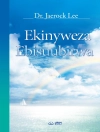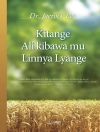How is religious experience to be identified, described, analyzed and explained? Is it independent of concepts, beliefs, and practices? How can we account for its authority? Under what conditions might a person identify his or her experience as religious? Wayne Proudfoot shows that concepts, beliefs, and linguistic practices are presupposed by the rules governing this identification of an experience as religious. Some of these characteristics can be understood by attending to the conditions of experience, among which are beliefs about how experience is to be explained.
Jadual kandungan
Preface
Introduction
1. EXPRESSION
The Priority of the Affective Mode: Schleiermacher’s
On Religion
The Feeling of Absolute Dependence:
The Christian Faith
Religious Language as Expression
Expression and Thought
2. INTERPRETATION
The Hermeneutic Tradition
The Pragmatic Tradition
Understanding and Explanation
3. EMOTION
Hume and the Traditional Theory
Aristotle on Emotion
A Philosophical Critique of the Traditional View
A Psychological Critique of the Traditional View
A Classic Conversion Experience
Attribution of Causes
4. MYSTICISM
The Search for a Mystical Core
Ineffability
Noetic Quality
Anomaly and Authority
5. EXPLICATION
The ‘Sense’ of James’s
Varieties
Sensible Authority
Religious Experience
6. EXPLANATION
The Problem
Descriptive and Explanatory Reduction
Protective Strategies
Force
Explaining Religious Experience
Conclusion
Notes
References
Mengenai Pengarang
Wayne Proudfoot is Professor of Religion at Columbia University.







![perlindungan daripada Brian Schrag & Julisa Rowe: Community Arts for God's Purposes [Chinese] 貼近神心意的社群藝術 perlindungan daripada Brian Schrag & Julisa Rowe: Community Arts for God's Purposes [Chinese] 貼近神心意的社群藝術](https://static.worldofdigitals.com/thumb_webp/740/9781645083740.webp)




